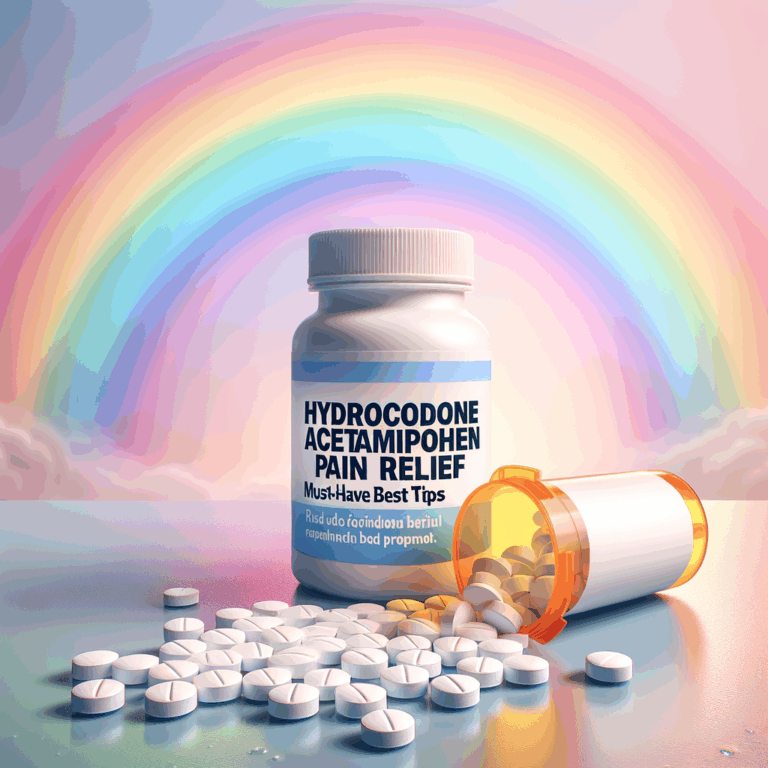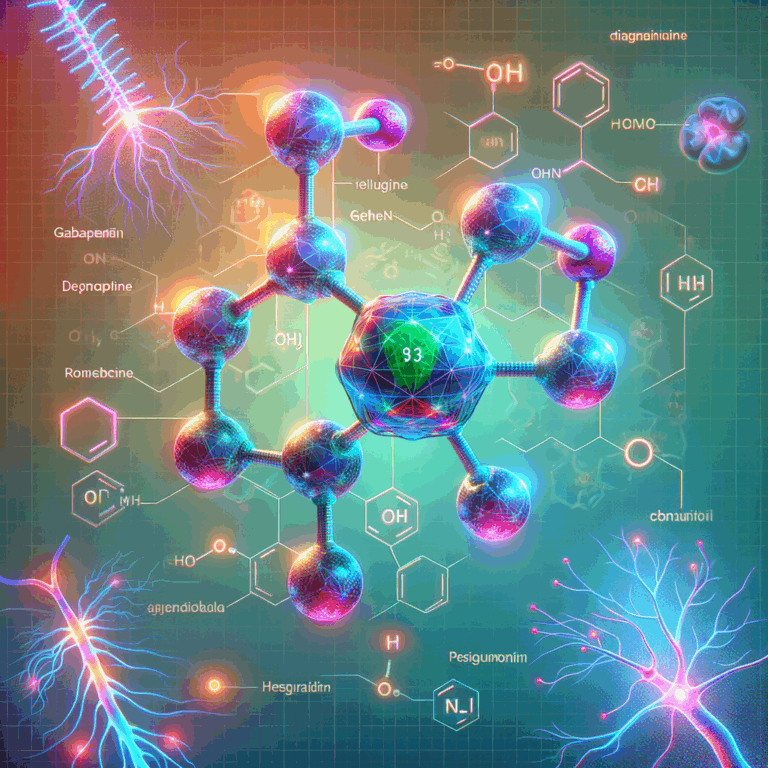
- Introduction: Why a Methylphenidate Dosage Guide Matters
- How Methylphenidate Works: A Simple Overview
- Common Formulations and Their Uses
- Methylphenidate Dosage Guide: General Principles
- Initial Dosing by Age Group
- Children (6–12 years)
- Adolescents (13–17 years)
- Adults (18 years and older)
- Specific Dosing for Different Formulations
- Immediate-Release (IR) Tablets
- Extended-Release (ER) Capsules and Tablets
- Transdermal Patch
- Titration Strategies: Finding the Right Dose
- Monitoring Response and Safety
- Common Side Effects and How to Manage Them
- Serious Risks and When to Seek Help
- Drug Interactions to Watch For
- Special Populations: Tailoring Dosing
- People with Cardiovascular Disease
- Pregnancy and Breastfeeding
- Older Adults
- Practical Tips for Taking Methylphenidate
- Managing Missed Doses and Overdose
- Switching Between Products
- Behavioral and Lifestyle Strategies to Complement Medication
- Storage and Legal Considerations
- Tips for Parents and Caregivers
- Common Myths and Misconceptions
- Case Examples: Practical Scenarios
- Checklist Before Starting Methylphenidate
- When to Consider Alternative Treatments
- Summary: Key Takeaways from This Methylphenidate Dosage Guide
- FAQs (Frequently Asked Questions)
- 1. How long does it take for methylphenidate to start working?
- 2. Can I drink alcohol while taking methylphenidate?
- 3. Will methylphenidate make me addicted?
- 4. Can children take methylphenidate long-term?
- 5. What if methylphenidate stops working after a while?
- 6. Is methylphenidate safe with antidepressants?
- 7. How should I travel with methylphenidate?
- 8. Can methylphenidate affect growth permanently?
- 9. What should I tell my child’s school nurse about dosing?
- 10. How do I switch from one methylphenidate brand to another?
- References
Introduction: Why a Methylphenidate Dosage Guide Matters
Methylphenidate ranks among the most prescribed stimulants for ADHD and narcolepsy. Consequently, proper dosing matters a great deal. Right dosing improves focus and reduces side effects. Conversely, wrong dosing causes poor symptom control and adverse reactions.
This guide explains how methylphenidate works, explores formulations, and outlines practical dosing tips. Moreover, you’ll find safe-use strategies, monitoring advice, and common interactions. Read on to learn evidence-based tips you can discuss with your clinician.
How Methylphenidate Works: A Simple Overview
Methylphenidate increases dopamine and norepinephrine activity in the brain. It does so by blocking transporter proteins that remove these neurotransmitters from synapses. As a result, attention and impulse control often improve.
Furthermore, onset and duration depend on the formulation. Immediate-release tablets act fast and last a few hours. Extended-release forms release medication slowly for all-day effects. Therefore, choosing the right formulation helps match treatment to daily routines.
Common Formulations and Their Uses
Methylphenidate comes in several forms: immediate-release (IR), sustained-release (SR), extended-release (ER), and transdermal patch. Each option offers advantages depending on the patient’s needs. Short-acting pills offer flexibility for dose adjustments during the day. Long-acting versions reduce dosing frequency and improve morning routines.
Besides these, manufacturers produce various branded and generic versions. They differ in release mechanisms and dosing strengths. As a result, switching between products may require clinician guidance and dosage adjustment. Always check the product name and instructions before use.
Methylphenidate Dosage Guide: General Principles
Start low and go slow. Begin with the lowest effective dose and titrate based on response. This approach reduces side effects and helps identify the minimal effective dose. Clinicians typically reassess symptoms and side effects every week during titration.
Individual factors influence dosing. Consider age, weight, comorbid conditions, and previous stimulant responses. Additionally, consider sleep patterns and school or work schedules when selecting a formulation. Together, these factors guide a personalized dosing plan.
Initial Dosing by Age Group
Children (6–12 years)
For children, clinicians usually start with low doses. Immediate-release methylphenidate often starts at 5 mg twice daily. Alternatively, extended-release options may begin at 18 mg once daily. After one week, clinicians may increase the dose by 5–10 mg based on response.
Overall, total daily doses commonly range from 10 to 60 mg. However, physicians rarely exceed 60 mg/day. They base adjustments on symptom control and side effects. Regular follow-up helps fine-tune the dose.
Adolescents (13–17 years)
Adolescents tolerate higher doses than younger children. Providers may begin IR dosing at 10 mg once or twice daily. Extended-release formulations typically start at 18 or 20 mg once daily. From there, clinicians adjust every week as needed.
Most teens achieve control with 30–72 mg/day, depending on the product. Still, physicians rarely exceed product-specific maxima. They assess growth, mood, and cardiovascular status regularly.
Adults (18 years and older)
For adults, clinicians often start with 10–20 mg daily of IR methylphenidate split into two or three doses. Extended-release options usually start at 18–36 mg once daily. Clinicians titrate by 10–20 mg increments each week.
Effective adult doses commonly range from 20 to 72 mg/day or higher for some formulations. Yet clinicians adjust doses carefully if cardiovascular risk factors or psychiatric comorbidities exist.
Specific Dosing for Different Formulations
Immediate-Release (IR) Tablets
IR tablets release medication quickly and act for 3–5 hours. Therefore, patients may take them two to three times daily. Typical single doses range from 5 to 20 mg. Consequently, total daily doses vary based on frequency.
Because IR tablets offer flexibility, they work well when unpredictable symptom patterns exist. However, they require adherence to multiple doses. Remember to avoid late-afternoon dosing to prevent insomnia.
Extended-Release (ER) Capsules and Tablets
ER formulations provide steady medication release for 8–12 hours or longer. These products suit patients needing all-day coverage. Common starting doses include 18 mg, 20 mg, or 36 mg once daily.
ER products differ in release mechanisms. Thus, you cannot assume dose equivalence across brands. When switching brands, clinicians often convert doses and then reassess symptoms.
Transdermal Patch
The methylphenidate patch releases medication through the skin over 9 hours. It provides flexible wear times to match school or work schedules. Typical patch strengths include 10, 15, 20, and 30 mg worn for nine hours.
Patch dosing requires careful timing. For example, wear the patch early in the morning for school coverage. Remove it at the end of the day to reduce sleep disturbances. Skin irritation can occur, so rotate application sites.
Titration Strategies: Finding the Right Dose
Titrate slowly and observe closely. Increase the dose in small increments, often weekly. During each step, monitor both symptom improvement and side effects. Use standardized rating scales when possible to quantify progress.
Also, consider alternative strategies when side effects limit dosing. For instance, switch formulations, change dosing times, or reduce single-dose strength while increasing frequency. In complex cases, involve a specialist such as a psychiatrist or neurologist for guidance.
Monitoring Response and Safety
Track effectiveness and side effects consistently. Use symptom checklists, school or work feedback, and patient-reported outcomes. Also, monitor weight, growth in children, blood pressure, and heart rate. Record baseline measurements before starting treatment.
Additionally, watch for psychiatric symptoms such as mood changes, anxiety, or psychosis. If these symptoms emerge, pause medication and consult a clinician. Ongoing monitoring improves safety and helps maintain therapeutic benefit.
Common Side Effects and How to Manage Them
Methylphenidate causes several common side effects. These include decreased appetite, insomnia, stomach upset, and headache. Most side effects lessen after the body adjusts. Still, you can take steps to reduce them.
To manage decreased appetite, schedule larger meals when medication effects wear off. For insomnia, avoid late-day doses and use sleep hygiene measures. If headaches persist, clients may need dose adjustments or a different formulation. Always report severe or persistent side effects promptly.
Serious Risks and When to Seek Help
Although rare, serious risks can occur. These include cardiovascular events, sudden mood changes, and psychotic symptoms. If you notice chest pain, fainting, or sudden severe mood shifts, seek emergency care.
Moreover, avoid methylphenidate if you have certain heart conditions or uncontrolled high blood pressure. Clinicians should perform cardiac evaluations when warranted. In addition, do not combine methylphenidate with monoamine oxidase inhibitors (MAOIs).
Drug Interactions to Watch For
Methylphenidate interacts with several medications. Combining it with MAOIs can cause dangerous blood pressure spikes. Also, certain antidepressants and antipsychotics may alter stimulant effects. Consequently, clinicians should review the full medication list before prescribing.
Furthermore, some drugs affect methylphenidate metabolism. For instance, acidifying agents may reduce absorption, while alkalinizing agents may increase it. Therefore, discuss over-the-counter medicines and supplements with your prescriber.
Special Populations: Tailoring Dosing
People with Cardiovascular Disease
Stimulants can increase heart rate and blood pressure. As a result, use caution in patients with heart disease or risk factors. Clinicians often refer these patients for cardiology evaluation prior to starting methylphenidate.
When treatment proceeds, watch vitals and symptoms closely. If tachycardia, chest pain, or syncope develops, stop the medication and seek medical attention.
Pregnancy and Breastfeeding
Data on methylphenidate during pregnancy remain limited. Therefore, clinicians weigh potential benefits against possible risks. Some specialists recommend avoiding stimulants in pregnancy unless benefits clearly outweigh risks.
Methylphenidate passes into breast milk in small amounts. Discuss breastfeeding plans with your clinician. They may suggest alternative treatments or specific monitoring strategies.
Older Adults
Older adults may be more sensitive to stimulant side effects. As such, clinicians start with lower doses and titrate slowly. Watch for insomnia, appetite loss, and cardiovascular effects. Also, consider cognitive issues and drug interactions common in this population.
Practical Tips for Taking Methylphenidate
– Take your dose at the same time daily when possible.
– Use long-acting forms for once-daily convenience.
– Avoid late afternoon or evening doses to prevent insomnia.
– Swallow extended-release capsules whole unless instructions say otherwise.
– Rotate patch sites and remove the patch at the recommended time.
These habits enhance effectiveness and reduce side effects. Also, coordinate dosing with school or work schedules for the best daily outcomes.
Managing Missed Doses and Overdose
If you miss a dose, take it as soon as you remember. However, skip it if close to your next dose. Taking an extra dose can cause insomnia or overstimulation. In case of overdose, seek immediate medical care.
Overdose symptoms include rapid heartbeat, agitation, hallucinations, and seizures. Emergency teams can provide supportive care and manage complications. Therefore, store medication safely to avoid accidental ingestion.
Switching Between Products
Switching products requires attention to dose equivalence. Different brands and release mechanisms produce varied blood levels. Therefore, clinicians calculate an approximate equivalent dose and adjust based on response.
When switching, give the new product a trial period. During this period, track symptom control and side effects closely. Communicate openly with your clinician about any changes in effectiveness.
Behavioral and Lifestyle Strategies to Complement Medication
Medication works best alongside behavioral strategies. Cognitive behavioral therapy (CBT), coaching, and organizational skills training help sustain gains. Also, regular exercise and sleep hygiene improve attention and mood.
Nutrition also plays a role. Maintain regular meals and stay hydrated. Avoid excessive caffeine, which may worsen side effects or interfere with sleep. Combined approaches yield the best long-term outcomes.
Storage and Legal Considerations
Store methylphenidate in a secure, dry place away from children. Stimulants have abuse potential and require careful handling. Do not share medication with others. In many places, methylphenidate is a controlled substance.
Follow local laws when transporting medication across regions or countries. Always carry a prescription or a doctor’s note when traveling. These steps help avoid legal issues and ensure continuous treatment.
Tips for Parents and Caregivers
Keep a symptom diary to track changes and side effects. Document mood, sleep, appetite, and academic performance. Share this information with your clinician at follow-ups.
Moreover, partner with schools for consistent strategies. Provide the school nurse with clear dosing instructions. Educate teachers about expected benefits and possible side effects.
Common Myths and Misconceptions
Myth: Methylphenidate is a “quick fix” for all attention problems. Fact: It helps many people, but it does not replace therapy and skills training. Complementary behavioral strategies matter.
Myth: It always stunts growth in children. Fact: Some children show small growth changes, but regular monitoring and dose adjustments minimize risk. Clinicians balance benefits and potential growth effects.
Case Examples: Practical Scenarios
Case 1: A 9-year-old with morning struggles and afternoon rebound. Solution: Try extended-release in the morning or combine an ER dose with a small IR dose for late afternoon coverage. Monitor appetite and sleep.
Case 2: A college student experiencing midday focus drops. Solution: Use an ER formulation for morning coverage. Add a low-dose IR booster at midday if necessary. Avoid evening doses to protect sleep.
These examples show how tailoring treatment to daily needs improves outcomes. Discuss such options with your prescriber for personalized plans.
Checklist Before Starting Methylphenidate
– Obtain a full medical history, including cardiac issues.
– Review current medications and supplements.
– Record baseline blood pressure, heart rate, and weight.
– Discuss goals, schedules, and side effect concerns.
– Agree on a follow-up plan and monitoring schedule.
This checklist helps ensure safe, effective treatment from the start.
When to Consider Alternative Treatments
If methylphenidate proves ineffective or causes intolerable side effects, consider alternatives. Atomoxetine, guanfacine, and bupropion are non-stimulant options. In addition, behavioral therapies remain effective across ages.
Work with your clinician to try alternatives safely. Also, evaluate comorbid conditions such as anxiety or tic disorders that may affect treatment choices.
Summary: Key Takeaways from This Methylphenidate Dosage Guide
Methylphenidate helps many people with ADHD and narcolepsy. Start low and titrate slowly to find the minimal effective dose. Choose formulations based on daily needs and schedules. Monitor symptoms, growth, and cardiovascular status regularly.
Finally, combine medication with behavioral strategies and lifestyle measures. Communicate openly with clinicians, schools, and caregivers. These steps maximize benefits and reduce risks.
FAQs (Frequently Asked Questions)
1. How long does it take for methylphenidate to start working?
Most immediate-release forms begin working within 20–60 minutes. Extended-release products may take longer to reach full effect. Patients often notice morning improvements within a day.
2. Can I drink alcohol while taking methylphenidate?
No. Alcohol can increase side effects and impair judgment. Additionally, alcohol may alter the release of extended-release products. Discuss alcohol use with your clinician.
3. Will methylphenidate make me addicted?
When used as prescribed for ADHD or narcolepsy, the addiction risk is low. However, misuse or nonmedical use raises the risk. Store medication securely and follow dosing instructions.
4. Can children take methylphenidate long-term?
Yes, many children take it long-term with regular monitoring. Clinicians track growth, cardiac status, and symptom control. Periodic medication holidays may occur in some cases.
5. What if methylphenidate stops working after a while?
Tolerance can occur, although it’s uncommon. First, review adherence, sleep, and substance use. If the issue persists, consult your clinician for dose adjustment or alternative treatments.
6. Is methylphenidate safe with antidepressants?
Some antidepressants interact with methylphenidate. For example, combining it with MAOIs is unsafe. Other antidepressants may require dose adjustments. Always review medications with your clinician.
7. How should I travel with methylphenidate?
Carry medication in its original container with your prescription label. Bring a copy of the prescription or a clinician letter. Check regulations for your destination, especially for international travel.
8. Can methylphenidate affect growth permanently?
Studies show small growth delays in some children, often temporary. Clinicians monitor height and weight regularly. They may adjust dosing to minimize impact.
9. What should I tell my child’s school nurse about dosing?
Provide the exact dose, timing, and any special instructions. Include emergency contact information and details about side effects. Also, note if the child will receive doses at school.
10. How do I switch from one methylphenidate brand to another?
Consult your clinician before switching. They will calculate approximate dose equivalence and plan a trial period. Track symptom control and side effects closely after switching.
References
1. American Academy of Pediatrics. Clinical practice guideline: Diagnosis and evaluation of the child with ADHD. https://publications.aap.org/pediatrics/article/144/4/e20192528/36941/Clinical-Practice-Guideline-Diagnosis-Evaluation (accessed 2025).
2. National Institute for Health and Care Excellence (NICE). Attention deficit hyperactivity disorder: diagnosis and management. https://www.nice.org.uk/guidance/ng87 (accessed 2025).
3. UpToDate. Methylphenidate: Drug information. https://www.uptodate.com/contents/methylphenidate-drug-information (subscription may be required).
4. Micromedex. Methylphenidate information. https://www.micromedexsolutions.com (subscription may be required).
5. FDA. Concerta (methylphenidate hydrochloride) prescribing information. https://www.accessdata.fda.gov/drugsatfda_docs/label/2010/021121s012lbl.pdf
6. Spencer TJ, et al. Practical guide to ADHD treatment in children and adolescents. Journal of Clinical Psychiatry. https://pubmed.ncbi.nlm.nih.gov/ (search “ADHD methylphenidate guide”) (accessed 2025).
7. Wigal SB, et al. Methylphenidate patch: pharmacokinetics and clinical use. Pediatric Drugs. https://link.springer.com/article/10.1007/s40272-012-0000-0 (accessed 2025).
Note: Links and guidelines may update over time. Always consult recent clinical resources and your healthcare provider for personalized advice.



